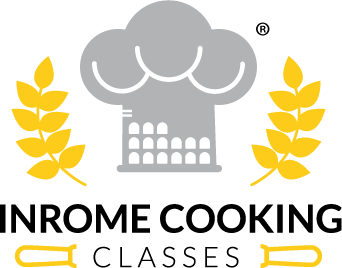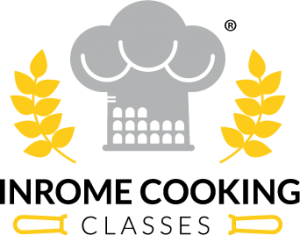A square that isn’t a square, an illuminated backdrop of Baroque fountains and palaces – Piazza Navona is one of the most curious and iconic attractions in Rome.
One of Piazza Navona’s key characteristics is its unusually long shape, and many pass through Piazza Navona without realizing that this derives from its original function in ancient Rome. Around 86 AD, a mere decade after the Colosseum had been completed, the last Flavian emperor Domitian built the square as a large racing track – the Circus Agonalis.
Fig. 1. View of Piazza Navona at Night
Today Piazza Navona still draws many visitors, but not for races as it did centuries ago. Instead, people visit to admire the three magnificent fountains that line the piazza, be entertained by the artists and street performers who set up shop in the square’s center, or soak in the romantic evening atmosphere.
The past and present converge throughout Piazza Navona. The two Geniuses of the Baroque, Bernini and Borromini, still face off with one another on Piazza Navona, locked in an eternal struggle to leave the most lasting architectural legacy. Borromini’s contribution is the elegant church of Sant’Agnese while Bernini’s lasting legacy is the famous fountain of the Quattro Fiumi.
History
The “Circus Agonalis”
In ancient Rome, just as today, the area around Piazza Navona was called the Campus Martius. Meaning 'the Field of Mars', this was originally a green open area where the Roman military would train, exercise, arm themselves before undertaking campaigns and disband at the end of them, as armed soldiers were forbidden from entering within the city walls.
During the Age of Augustus (31 BC - 14 AD), intense building activity reshaped the Campus Martius, transforming it from an open field into a densely built-up (though particularly lavish) landscape of bath complexes, temples, basilicas, and other public spaces.

Fig. 2. The Campus Martius during the Age of Hadrian (117 - 138 AD)
Domitian's Circus Agonalis followed in this tradition, offering the public a recreational space in the newly developed city center. Named the Circus Agonalis after the Latin word for competitions (agones), the stadium that Domitian dedicated in 85 AD was given as a gift to Rome’s citizens, becoming the first permanent stadium for athletic competitions in Rome. It was certainly spacious, able to accommodate as many as 30,000 spectators. This was still far fewer than the nearby Circus Maximus which archaeologists believe could hold some 250,000 people. Yet the emperor's offering was still very much welcome, providing entertainment in close vicinity of the nearby local baths. Because of its smaller size, the Circus Agonalis served as an athletic stadium for a variety of games, including foot races and even mock naval battles. We only hear of one occasion on which the Circus Agonalis hosted gladiatorial contests - in 217 AD while the Colosseum was undergoing repairs for fire damage.From Stadium to Square
During the Middle Ages, many of Rome’s ancient structures became the (literal) building blocks of the new buildings and churches around them. Materials were taken from major structures from the past, including the Colosseum, much of the Roman Forum, and also the Circus Agonalis.
Fig. 3. Piazza Navona: Past and Present
Because the this deconstruction of the circus left a large open area, this land was paved over and turned into a square. In the late fifteenth century, Piazza Navona began to host a variety of events, including food markets, festivals and horse training. And in order to cool off during the hot Roman summers, Piazza Navona was flooded on certain days during this period.
But the flooding of Piazza Navona ended when the square was repaved in the nineteenth century, raising the level of the street and changing the drainage system of the piazza. Consgining it to history as a remnant of Hidden Rome.

Fig. 4. Piazza Navona in a 19th-century postcard
The Fountains of Piazza Navona
The three fountains in Piazza Navona, Fontana dei Quattro Fiumi, Fontana del Moro, and Fontana del Nettuno, line the square and provide structure to such a large area. Placed in the center of Piazza Navona and topped with an Egyptian obelisk, the Fontana dei Quattro Fiumi (Fountain of the Four Rivers) is the best known of the square’s three fountains. Designed by Bian Lorenzo Bernini in 1651, this fountain represents the four major continents at the time, and their respective rivers. They are the Nile (Africa), Danube (Europe), Ganges (Asia), and Rio de la Plata (America). Fig. 5. The Navona Obelisk embedded into Bernini's Fontana dei Quattro Fiumi
Located on the southern end of the square, Fontana del Moro (Fountain of the Moor) was originally sculpted by Giacomo della Porta in 1575. He sculpted the dolphin and the four Tritons that are featured in the fountain, but it was Bernini that sculpted the central statue of the Moor that was added in 1653.
The final fountain at the northern end of Piazza Navona is the Fontana del Nettuno (Fountain of Neptune). Surprisingly, the original fountain did not have any statues. The basin of the fountain was designed in 1574 by Giacomo della Porta, and the simple design stayed until the nineteenth century. Antonio della Bitta added the center sculpture of Neptune, while Gregorio Zappalà completed the other sculptures in 1878, resulting in the fountain we see today.
→ Learn more about the Obelisks in Rome
→ Learn more about the Fountains of Rome
Fig. 5. The Navona Obelisk embedded into Bernini's Fontana dei Quattro Fiumi
Located on the southern end of the square, Fontana del Moro (Fountain of the Moor) was originally sculpted by Giacomo della Porta in 1575. He sculpted the dolphin and the four Tritons that are featured in the fountain, but it was Bernini that sculpted the central statue of the Moor that was added in 1653.
The final fountain at the northern end of Piazza Navona is the Fontana del Nettuno (Fountain of Neptune). Surprisingly, the original fountain did not have any statues. The basin of the fountain was designed in 1574 by Giacomo della Porta, and the simple design stayed until the nineteenth century. Antonio della Bitta added the center sculpture of Neptune, while Gregorio Zappalà completed the other sculptures in 1878, resulting in the fountain we see today.
→ Learn more about the Obelisks in Rome
→ Learn more about the Fountains of Rome
Useful Info
OPENING HOURS:
Monday - Sunday - Always OpenFAQs
Is Piazza Navona free?
Yes it is. Just like the Spanish Steps, Trevi Fountain, and Pantheon nearby, you don't have to part with your cash to visit these attractions.
It does cost to visit the Stadium of Domitian beneath Piazza Navona. Prices range from €6.50 for children aged 12 - 18 to €8.50 for adults aged 19 and over.
What is there to do in Piazza Navona?
Other than Piazza Navona’s famous fountains and the many restaurants that line its edges, there are still other things to see in this historic square.
Sant’Agnese in Agone is the major Catholic Church in the square, located right next to Bernini’s Fontana dei Quattro Fiumi. The church is said to be on the site where St. Agnes, and early Christian, died in the early fourth century. But the church itself did not begin construction until 1652, when Pope Innocent X wanted a family chapel built on the site next to his family’s palace, Palazzo Pamphili (which is right next to Sant’Agnese in Agone today).
Although much of the original Circus Agonalis was dismantled during the Middle Ages, visitors to Piazza Navona can see what remains of the Stadium of Domitian by going to the Piazza Navona Underground.
Piazza Navona is still the site for festivals and events year round, including its annual Christmas market. From December to early January, visitors can shop from local vendors in the square, or enjoy the live entertainment and festive decorations that appear throughout the piazza.





